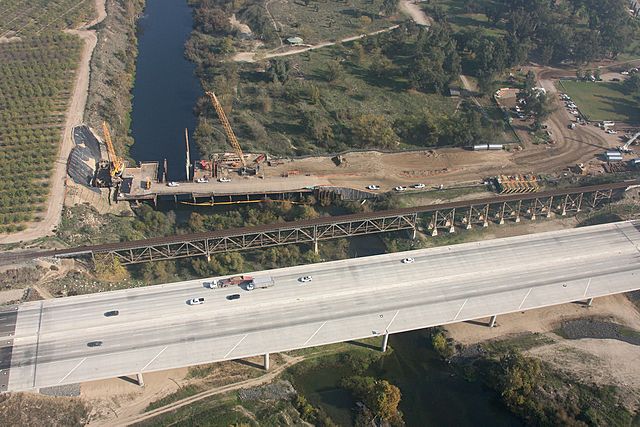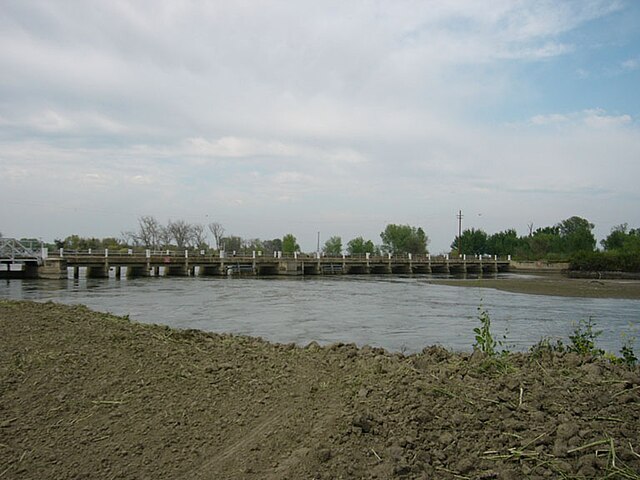Big Creek Hydroelectric Project
The Big Creek Hydroelectric Project is an extensive hydroelectric power scheme on the upper San Joaquin River system, in the Sierra Nevada of central California. The project is owned and operated by Southern California Edison (SCE). The use and reuse of the waters of the San Joaquin River, its South Fork, and the namesake of the project, Big Creek – over a vertical drop of 6,200 ft (1,900 m) – have over the years inspired a nickname, "The Hardest Working Water in the World".
Henry E. Huntington, wealthy financier from Southern California who was largely responsible for the project's construction.
The San Joaquin & Eastern Railroad at Huntington Lake, c. 1918
Shaver Lake, completed in 1927, stores excess runoff from Huntington Lake to increase power generation.
Mammoth Pool Dam (far right), completed in 1959, is – at 411 ft (125 m) high – the tallest dam of the Big Creek Project.
The San Joaquin River is the longest river of Central California. The 366-mile (589 km) long river starts in the high Sierra Nevada, and flows through the rich agricultural region of the northern San Joaquin Valley before reaching Suisun Bay, San Francisco Bay, and the Pacific Ocean. An important source of irrigation water as well as a wildlife corridor, the San Joaquin is among the most heavily dammed and diverted of California's rivers.
San Joaquin River near Vernalis
Crossings of California State Route 99 and the Union Pacific Railroad along the northern border of Fresno. The early stages of construction of California High-Speed Rail's San Joaquin River Viaduct is also visible.
The San Joaquin at Mendota Pool during the high flows of April 2006
Headwaters of the Middle Fork San Joaquin River, just downstream of Thousand Island Lake








